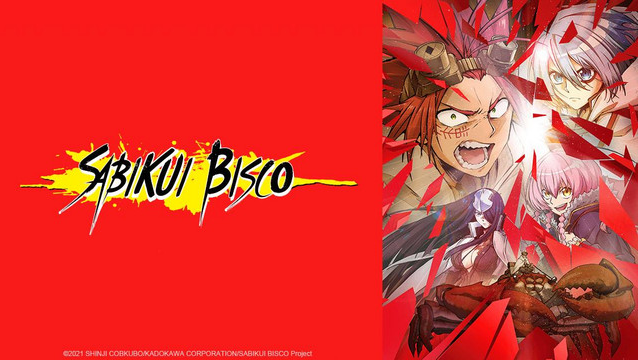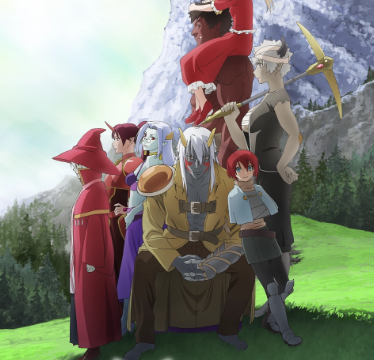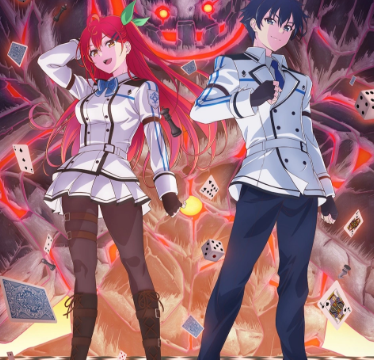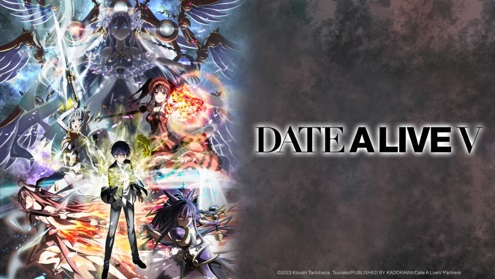English Dub Review: Sabikui Bisco Season One
Based on the Japanese light novel series written by Shinji Cobkubo and illustrated by K Akagashi, with world-building art by mocha. Sabikui Bisco (Or “Rust Eater Bisco” as it’s often called) takes place in a universe where a plague-like wind blows across the sandy expanse of a post-apocalyptic Japan called the “Rusty Wind” which causes all things (including organic lifeforms) to rust away, with mushroom spores being the alleged cause of it. Akaboshi Bisco, known as the “Man-Eating Mushroom,” is a wanted criminal archer whose arrows instantly grow mushrooms wherever they land. However, he is in truth a “Mushroom Keeper,” a person with archery skills who spreads fungi in order to enrich the land and return it to its previous state.
Alongside the giant crab Akutagawa and young doctor Milo Nekoyanagi (AKA “Dr. Panda” due to being born with a black birthmark on his left eye), Bisco ventures through the wastelands of Japan searching for the mythical “Rust-Eater” a rare mushroom that’s said to instantly cure rust…
On the technical side, The series was made by the relatively new “studio OZ” and directed by Atsushi Itagaki who finally makes his directorial debut with Sadayuki Murai writing the series’ scripts, Ai Asari and Ikariya in charge of character design, and Takeshi Ueda and Hinako Tsubakiyama composing the series’ music. The opening theme song is “Even the Wind is Silent” by JUNNA, while the ending theme song is “Howl” by Ryōta Suzuki and Natsuki Hanae who respectively voice Bisco & Milo in the Japanese Dub. For the voicework, one of the standouts is the titular Bisco being voiced by Kyle Igneczi whose performance almost sounded like Johnny Yong Bosch.
Taking place in a fictionalized post-apocalyptic version of Japan which has been reduced to a dystopian sandy wasteland that gives off Trigun & Mad Max vibes. The premise speaks for itself as we follow the journey of two characters with mutual motivations who embark on a dangerous adventure.
The world-building is easily one of the best highlights of this show with colorful visuals that are often grand in scale with many of the towering otherworldly-looking animals that are used in this show feeling like a drug trip with how they’re utilized and have to be seen to be believed for how imaginative they are in concept and design.
As the story unfolds, it becomes progressively clearer why both Bisco and later Milo are motivated by their actions, and the trouble Bisco and his Mushroom Keeper brethren fall victim to delve into some topical parables that in some ways mirror our world. Especially when it comes to how corrupt politicians manipulate the masses.
Overall, while the ending felt a bit rushed, The Anime itself feels more like an experience than a show. If you can keep up with the speed and wackiness, and also some of the unexpected emotional moments, it will be obvious that they’re all intended, and they’re all part of what makes this anime so much fun. While the light novel it’s based on is currently ongoing at the time of this review, It remains to be seen if Season 2 becomes a thing. But at the very least, the ending works as sort of a self-contained adventure.
























I hope it's not Crunchyroll; if they really cared about the franchise much, Volume 10 would have already been announced a long time ago.